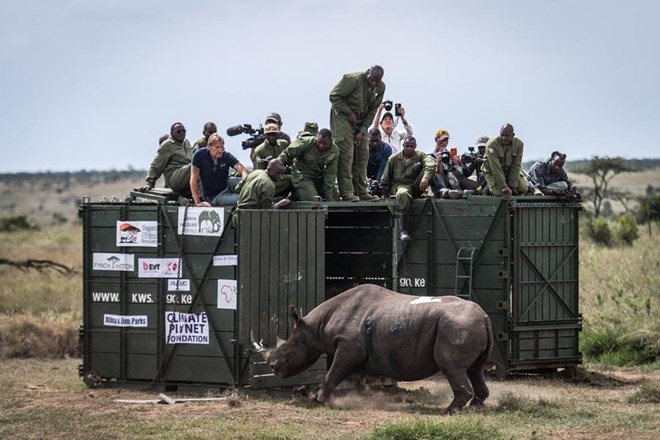Facebook Twitter (X) Instagram Somali Magazine - People's Magazine
Kenya has started moving 21 critically endangered eastern black rhinos to a new home in Segera Conservancy, located in Laikipia County, about 250 kilometers north of Nairobi. The relocation began on May 24, 2025, and is expected to take around 18 days.
This move is part of a larger plan to create one of the biggest connected rhino habitats in the world. The goal is to protect this rare species while also bringing long-term benefits to nearby communities through conservation-based development.
Rebecca Miano, Kenya’s Cabinet Secretary for the Ministry of Tourism and Wildlife, said the rhinos are being moved from Ol Pejeta Conservancy, Lewa Conservancy, and Lake Nakuru National Park. These areas currently hold more rhinos than they can comfortably support.
“Segera Conservancy offers the space needed to ease the pressure on these crowded sanctuaries,” Miano said while overseeing the move of the first two rhinos. She added that this step shows Kenya’s strong commitment to saving one of the world’s most iconic and endangered animals.
The black rhino population in Kenya has been growing steadily, thanks to strong conservation efforts. In 1989, there were only 384 black rhinos in the country. By the end of 2024, that number had risen to 1,059.

Erustus Kanga, Director General of the Kenya Wildlife Service (KWS), explained that relocating the rhinos is not just about making space—it’s also about saving lives. Rhinos are very territorial animals, and fights over space and dominance can often lead to death. In fact, over 30 percent of rhino deaths happen because of these territorial clashes. By moving some rhinos to a new location with plenty of space, the chances of such fights are reduced.
The relocation project is a joint effort between the Kenya Wildlife Service and the ZEITZ Foundation. It is part of a long-term plan to link Segera Conservancy with other nearby wildlife areas, forming a vast safe zone for rhinos. This connected landscape will allow rhinos to move freely between different parts of the region, improving their chances of survival and genetic diversity.
Moving such large animals is not easy. Each rhino is carefully tranquilized before being moved. Teams of experts monitor the animals closely throughout the process to make sure they remain healthy and safe. Once at Segera, the rhinos will be observed by wildlife specialists to help them adjust to their new surroundings.
This careful and science-based approach ensures the rhinos get the best possible chance at thriving in their new home.
Kenya’s continued efforts to protect the black rhino are seen as a major success story in wildlife conservation. With threats like poaching and habitat loss still present, actions like this relocation are crucial to ensuring the future of this species.
By expanding rhino habitats and reducing overcrowding, Kenya is not only protecting an endangered species but also setting an example for other countries working to save their own wildlife.
The success of this project could pave the way for more ambitious conservation programs, proving that with proper planning, teamwork, and dedication, it is possible to reverse the decline of even the most endangered animals.

